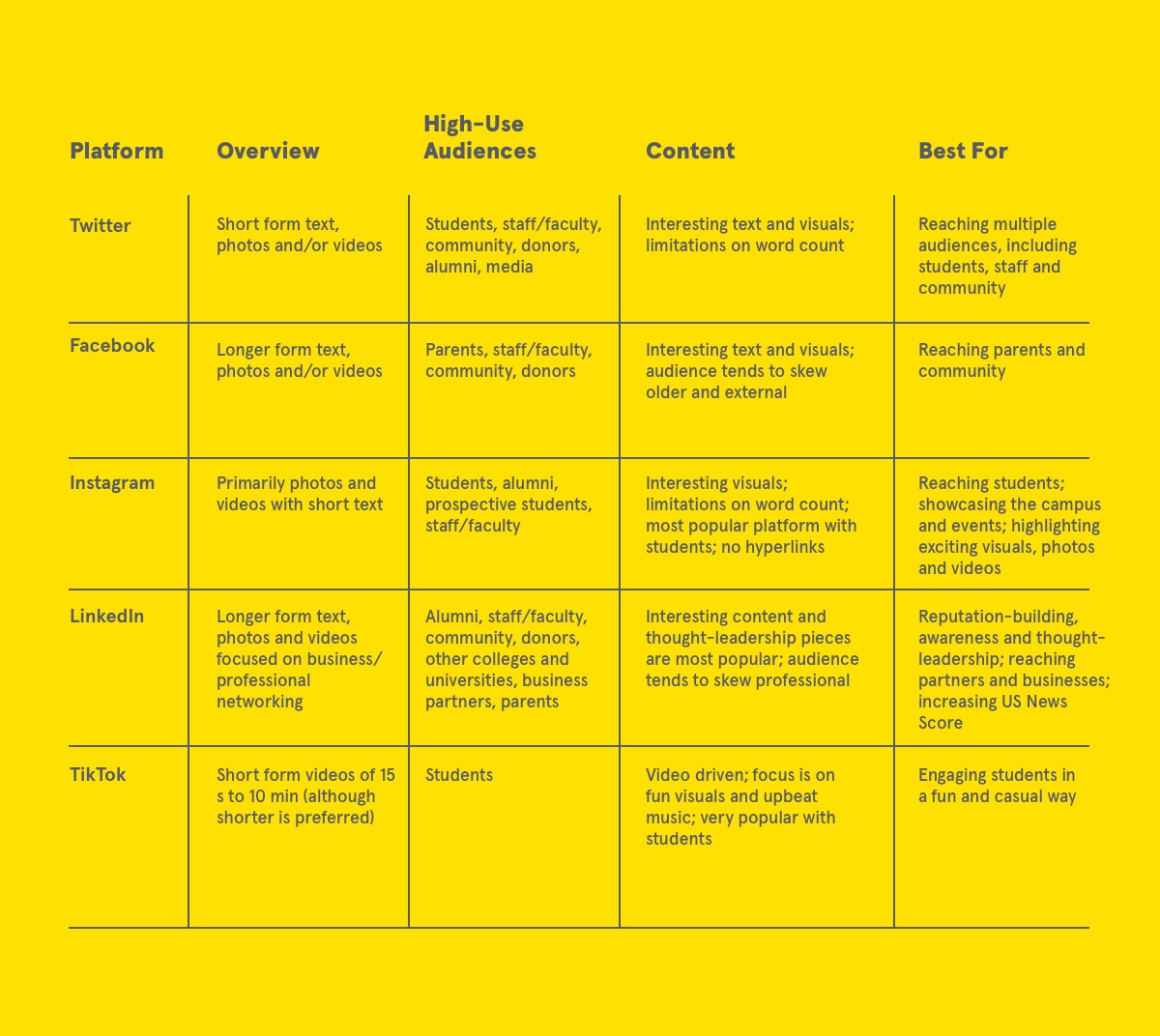Share this chart with senior administrators to help explain the platform options and to inform strategic direction when answering “Can we put it on social media?” MarCom can act as advisors and advocates when reviewing institutional stories and news and when determining what content matches each platform, including which can be the most effective at meeting institutional objectives.
An account for a senior leader, such as president or provost, should highlight high level thought-leadership and reputation-building content. Posts should include research studies, faculty publications, talks and external speakers, op-ed pieces, interviews, partnerships, student features, academic initiatives and commentaries on thought-leadership articles or published pieces. Although similar or identical content may appear on the institution’s main account, a senior leader’s account can more frequently present and promote this material due to the targeted audience.
The choice of platform depends on the account’s primary goals. For reputation building with external audiences, such as potential partners, other institutions, alumni and parents, LinkedIn and Twitter are the best options. Instagram and Twitter are good choices to engage with students and to showcase innovative ideas, as well as to promote internal and external research opportunities. Academic deans tasked with elevating the profile and visibility of a professor or academic discipline may be tempted to use Facebook and Instagram because they believe these platforms are trendy. However, deans should focus their efforts on LinkedIn and Twitter because of the access to external audiences.
Some departments and groups may have unique needs and purposes for an account. For example, a campus police or public safety department has a perception issue and wants to build a more community-centered safety program. In this instance, platforms such as Instagram and TikTok can effectively engage the student body and embed the department in the culture, simultaneously humanizing the officers through picture and video. Unlike Twitter, which updates feeds in real time, Facebook, Instagram and TikTok are algorithm based and are inappropriate for crisis communications.
As with all social media decisions, the department must understand what opening an account entails and the level of maintenance it will require. Moreover, department employees must be trained on the appropriate procedures for posting to ensure consistency and timeliness.
These are but a few examples of conversations that should occur on campuses in the current social media age, and institutions should tailor the conversations to their own needs and brand images. As social media use increases as a tool for reputation-building and visibility, all intentions for social media accounts and posts should be met with the relevant questions of who, what, where, when and why. Fundamentally, the institution should determine the strategy behind opening an account or creating a post. That determination, as well as guidance from the provided chart, will drive a more strategic approach and purposeful intention to the social media accounts and posts, helping to build an effective and engaging social media presence.






